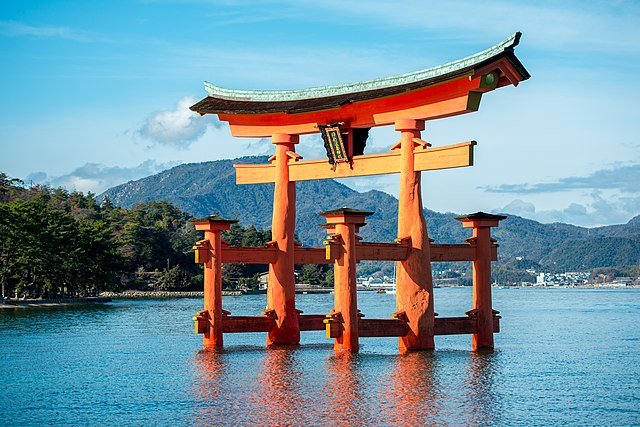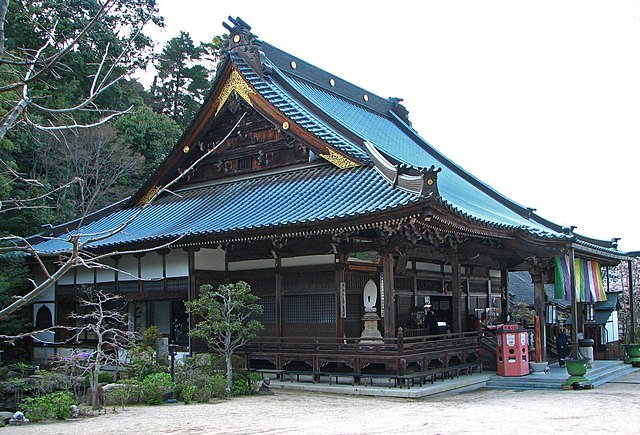What if I told you that one of Japan’s most haunting yet hopeful destinations could be explored thoroughly in just one day for under $50?
Hiroshima isn’t just a history lesson—it’s a profound journey through humanity’s darkest moment toward its most powerful message of peace. When I first stepped off the tram at the Genbaku-Dome-mae station, the weight of history hit me immediately. The skeletal remains of the Atomic Bomb Dome stood against the morning sky, a stark reminder that transformed my understanding of both the past and our shared future.
This guide will take you through everything you need to experience Hiroshima’s profound peace memorials and nearby Miyajima Island’s spiritual beauty, without breaking your budget or overwhelming your schedule.
Why Hiroshima Should Be on Every Traveler’s Must-See List
Beyond its historical significance, Hiroshima offers visitors a unique combination of profound reflection, stunning natural beauty, and genuine hope for humanity. The park encompasses over 120,000 square meters in the heart of the city, creating an oasis of contemplation amid urban life. You’ll witness one of Japan’s most iconic sights—the floating torii gate of Miyajima—while learning about resilience, peace, and the power of remembrance.
Here’s what makes this journey unforgettable:
- Stand where history changed forever, then find hope in humanity’s path forward
- Experience both solemn reflection and breathtaking natural beauty in one day
- Connect with a story that transcends borders and speaks to universal human values
- Budget-friendly exploration that doesn’t compromise on depth or meaning

The Heart of Memory: Hiroshima Peace Memorial Park
Planning Your Visit
Best Time to Visit: Arrive just after the museum opens at 6:30 am for a peaceful, serene experience with only a handful of other visitors. The crowds arrive with the tour buses around 10 AM, so early morning offers the contemplative atmosphere this sacred space deserves.
Essential Information:
- Museum Hours: 7:30 to 19:00 (until 20:00 in August, until 18:00 from December to February)
- Admission: 300 yen (about $2) for the Peace Memorial Museum, or 500 yen including the Treasure Hall
- Location: From Hiroshima Station, take tram line 2 or 6 to Genbaku-Domu Mae stop (15 minutes, 240 yen one way)
Pro Tip: Book advance reservations for the first hour of the day and the last 90 minutes for guaranteed entry during busy periods. Tickets can be purchased up to 90 days in advance through their online system.
The Atomic Bomb Dome: Where Time Stopped at 8:15 AM
The A-Bomb Dome is what remains of the former Prefectural Industrial Promotion Hall. When the bomb exploded, it was one of the few buildings to remain standing, and remains so today. This UNESCO World Heritage Site serves as more than a monument—it’s a time capsule frozen at the moment that changed everything.
Standing before the dome, you’ll notice how the iron framework has been preserved exactly as it appeared after the blast. The building’s strategic preservation tells a story without words, and walking around its perimeter reveals different perspectives of destruction and endurance.
Inside the Peace Memorial Museum: A Journey Through August 6, 1945
The museum surveys the history of Hiroshima and the advent of the nuclear bomb, with its main focus on the events of August 6: the dropping of the bomb and its outcome in human suffering.
What to Expect: The museum doesn’t shy away from the brutal reality of nuclear warfare. Personal belongings, photographs, and testimonies create an intensely human narrative. You’ll see belongings left by victims, A-bombed artifacts, and testimonies that convey the horrors and inhumane nature of nuclear weapons.
Practical Museum Tips:
- Allow 2-3 hours for a thorough visit
- Audio guides are highly recommended for deeper context
- Photography without flash is allowed for personal purposes, but be mindful of camera shutter sounds around other visitors
- The museum includes a visitor’s lounge where you can process what you’ve experienced
Memorial Monuments That Tell Stories
The Memorial Cenotaph: An arched tomb for those who died because of the bomb, containing a stone chest with a register of over 220,000 names. Standing here during the annual memorial ceremony on August 6th, when speeches are made and silence is observed at 8:15 AM, provides profound perspective on the scale of loss.
Children’s Peace Memorial: Built to commemorate Sadako Sasaki and thousands of child victims, this monument echoes the Japanese tradition that folding one thousand paper cranes grants one wish. Sadako’s wish was for a world without nuclear weapons—a message that resonates even more powerfully today.

Sacred Waters and Floating Gates: Miyajima Island Adventure
Getting There: Your Gateway to Wonder
Ferry Schedule and Costs:
- JR Ferry: First departure 6:25 AM from Miyajimaguchi, last departure 10:14 PM from Miyajima
- Cost: 200 yen one-way, 400 yen round-trip (plus 100 yen Miyajima visitor tax)
- Journey time: 10 minutes each way
- Pro tip: Special “Great Torii” ferry services operate from 9:10 AM to 4:10 PM, taking you closest to the floating gate for no extra cost
Transportation from Hiroshima: From Hiroshima Station, take the JR Sanyo Line to Miyajimaguchi Station (20 minutes, included with JR Pass), then walk to the ferry pier. If you have a Japan Rail Pass, the JR ferry is completely free.
Itsukushima Shrine: Where Heaven Meets Earth
The centuries-old shrine is unique for being built over water, with buildings connected by boardwalks and supported by pillars above the sea. This isn’t just architecture—it’s poetry written in wood and stone.
Shrine Hours:
- March to October 14: 6:30 to 18:00
- January, February, and October 15-November: 6:30 to 17:30
- December: 6:30 to 17:00
- Admission: 300 yen, or 500 yen including the Treasure Hall
The Magic of Tides: High vs. Low Tide Experiences
Understanding the tides transforms your Miyajima experience from good to extraordinary.
High Tide Magic: At high tide, the shrine and its gate appear to float above the water, creating the most picturesque views. The reflection of vermilion pillars in the water creates an almost mystical atmosphere, especially during sunset when the entire scene glows golden.
Low Tide Adventures: At low tide, visitors can walk out and see the gate from up close. You can appreciate how massive the structure truly is, examine thousands of barnacles calling the torii their home, and see offerings of 100 yen coins balanced between them. The black marks on the gate show exactly how high the tide reaches.
Timing Your Visit: The time between high and low tides varies but is usually around 6 or 7 hours, allowing you to potentially see both if you time your visit right.
Beyond the Shrine: Island Treasures
Mount Misen Adventure: The Miyajima Ropeway provides cable car access taking around 20 minutes to Shishi-iwa Observatory, with the mountain’s highest point just a 30-minute walk offering the best views of the surrounding inland sea and islands. Cable car tickets cost between ¥1100 one-way and ¥2000 return for adults.
Daisho-in Temple: This temple where Shingo Buddhism was first practiced on the island features a sand mandala created by visiting Tibetan monks, a garden of thousands of jizo (stone guardians) with colorful hats, and Henjo Cave with its ceiling covered by glowing yellow lanterns.
Budget Breakdown: Experience Both for Under $50
Transportation Costs:
- Hiroshima to Peace Park: 240 yen one-way via tram
- Peace Park to Miyajimaguchi: 420 yen via JR Sanyo Line (free with JR Pass)
- Ferry to Miyajima: 400 yen round-trip plus 100 yen visitor tax
- Total transport: ~1,160 yen ($7.50)
Admission Fees:
- Peace Memorial Museum: 300 yen
- Itsukushima Shrine: 300 yen
- Total admissions: 600 yen ($4)
Food Budget:
- Convenience store lunch: 500-800 yen
- Local Miyajima specialty: Try momiji manju or grilled oysters for 200-400 yen
- Total food: ~1,200 yen ($8)
Grand Total: Approximately 2,960 yen ($19) for the core experience
Money-Saving Insider Tips:
Free Experiences:
- Walking around Peace Memorial Park is completely free
- Stand to the side of tourist queues for almost identical photos with the torii gate
- Explore Miyajima’s charming streets and interact with the friendly deer (but don’t feed them!)
Smart Spending:
- Buy food after 8 PM when supermarkets discount fresh food by 10-20%
- Bring a reusable water bottle—tap water is safe to drink
- Consider the Miyajima Otokuja Ticket for 600 yen, which includes round-trip ferry and a choice of local sweets
Cultural Sensitivity and Etiquette
At the Peace Memorial Park:
- Maintain a respectful, quiet demeanor throughout
- Be especially careful about camera shutter sounds around other visitors
- Take time to read exhibits thoroughly rather than rushing through
- The museum shop offers thoughtful souvenirs that support peace education
At Itsukushima Shrine:
- Remove hats when entering shrine buildings
- Don’t walk directly down the center of pathways (reserved for deities)
- Please don’t damage the torii gate by placing coins in the barnacles—this practice has contributed to structural damage
- Photography is welcome, but be mindful of other visitors’ experiences
Practical Planning: Make Your Day Seamless
Sample One-Day Itinerary:
6:30 AM: Arrive at Peace Memorial Museum when it opens for a peaceful, crowd-free experience 7:00-9:30 AM: Explore Peace Memorial Museum and park monuments 10:00 AM: Take tram to Hiroshima Station, then JR Sanyo Line to Miyajimaguchi 11:00 AM: Catch a “Great Torii” ferry for the best views approaching the island 11:30 AM-4:00 PM: Explore Itsukushima Shrine, walk around the island, try local foods 4:30 PM: Return ferry to mainland 6:00 PM: Back in central Hiroshima
What to Pack:
- Comfortable walking shoes (you’ll walk on wooden boardwalks and possibly muddy low-tide areas)
- Layers for weather changes
- Portable phone charger for photos
- Cash (many places don’t accept cards)
- Reusable water bottle
Weather Considerations:
- Best seasons: Spring (cherry blossoms) and autumn (fall colors on Mount Misen)
- Summer: Museum hours extend until 20:00 in August due to increased tourism
- Winter: Shorter daylight hours but fewer crowds and beautiful winter light

Beyond the Obvious: Hidden Gems and Local Secrets
Hiroshima Specialties to Try:
- Hiroshima-style okonomiyaki: Layered rather than mixed, with noodles
- Oysters: Hiroshima Bay produces some of Japan’s finest
- Momiji manju: Maple leaf-shaped cakes filled with sweet red bean paste
Photography Tips:
- Golden hour at Miyajima: Sunset provides the most magical lighting for the torii gate
- Peace Park reflections: Early morning mist creates ethereal photos
- The ferry ride offers the closest views of the torii from the water—perfect for Instagram-worthy shots
Connecting with Locals:
Many elderly Hiroshima residents have personal or family connections to the bombing. While most are gracious about respectful questions, approach conversations with sensitivity and genuine interest in learning rather than satisfying curiosity.
The Deeper Journey: Why This Matters Today
Every year on August 6th, a ceremony is held at the park with speeches, wreaths laid at the Cenotaph, and a moment of silence observed at 8:15 AM—the precise moment of detonation. This isn’t just historical remembrance; it’s an active commitment to peace that visitors can witness year-round.
The juxtaposition of Hiroshima’s peace message with Miyajima’s spiritual beauty creates a uniquely Japanese experience—finding hope and transcendence even in the face of profound suffering. The museum spreads the message of “No More Hiroshimas”, while the floating shrine reminds us of the enduring power of human creativity and faith.
Your Journey Starts Here
Standing in Hiroshima Peace Memorial Park, then watching the sun set behind Miyajima’s floating torii gate, you’ll understand why this journey transcends typical tourism. It’s about witnessing humanity’s capacity for both destruction and healing, seeing how a city can transform tragedy into a message of hope that resonates across cultures and generations.
Ready To Plan Your Visit?
Start by checking the current Miyajima tide timetables to maximize your experience of seeing the torii gate at both high and low tide. Book your Peace Memorial Museum tickets in advance, especially if visiting during peak season.

